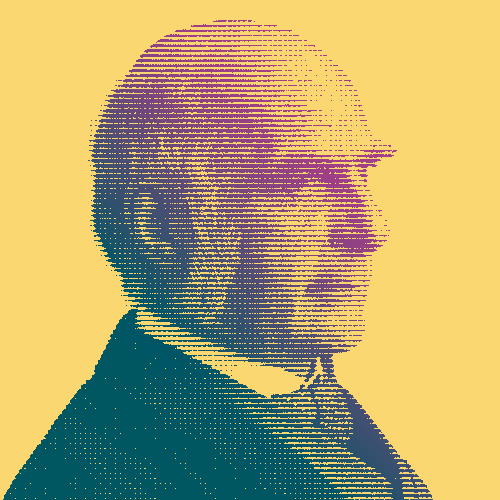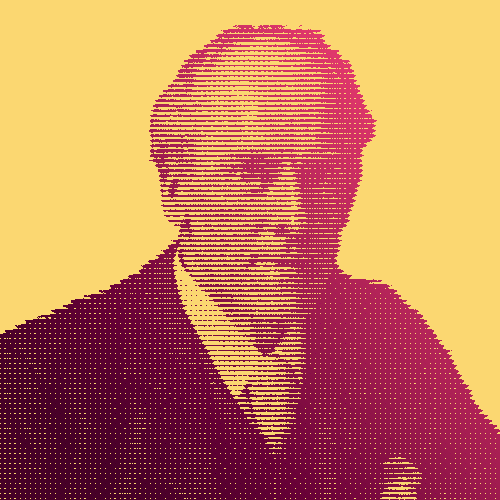Francis Galton left the world with a great variety of ideas and theories. Some of them remain foundational concepts of modern social science and statistics, while others are now regarded with disgust and viewed as contributing to incalculable horror.
The articles on historyofdatascience.com represent a diverse group of people from a variety of backgrounds, beliefs and historical periods. Their selection on this website is solely based on their contributions to the field of data science.
The views and opinions of people presented and expressed on this website are their own and do not necessarily reflect the values of Dataiku as a company nor do they constitute an endorsement by Dataiku.
If you are concerned by anything on this website, please contact us at alan.turing@dataiku.com
Measuring Everything
By all accounts Galton was a child of incredible intelligence. He could read by age two and by age six he was devouring books that most adults struggle to read.
Although his parents wanted him to go into medicine, he eventually abandoned his medical studies and turned his attention to seemingly everything else: geography, math, psychology, meteorology and criminology, among other subjects. Above all else, Galton enjoyed conducting measurements and developing ways to record and present information.
He is widely credited with devising the first weather map, which was published in The Times of London on April 1, 1875. Its use to the average reader was questionable, since the map only presented the weather from the previous day.
Galton also took an interest in fingerprints. Although others had proposed using fingerprints to identify criminal suspects, Galton was the first to undertake a major study on the subject. He collected roughly 8,000 fingerprint samples which he analyzed for patterns. In addition to dividing fingerprints into eight different types, he also presented evidence that each fingerprint is unique. His work is what elevated fingerprints to one of the most widely-accepted forms of evidence in criminal trials.
Correlation and Regression
Galton was the first to observe and demonstrate regression to the mean. He did it with a bean machine, otherwise known as a Galton Board or quincunx. The beads randomly bounce off the pegs and settle into one of a number of bins at the bottom. He was able to show that, the more beads are poured in, the more likely their distribution between the bins would even out.
He discovered correlation by observing the apparent relationship between human height and the length of forearms.
Finally, he pioneered the use of questionnaires to gather data from human subjects. Questionnaires have since become a big part of psychology and social science.
“Men who leave their mark on the world are very often those who, being gifted and full of nervous power, are at the same time haunted and driven by a dominant idea, and are therefore within a measurable distance of insanity.”
A Dark Twist on Darwinism
Galton was deeply inspired by the work of his cousin, Charles Darwin. He sought to build upon the theories put forth in On the Origins of Species by studying differences between human populations. He sought to amass as much data as possible on different physical and psychological characteristics in hopes of understanding whether certain abilities were inherited.
In 1869 he published Eminent Genius, in which he described eugenics as the “science of improving stock.” Among other things, he argued for a system of ranking families by “merit,” based on various metrics of success, such as professional achievement. The government should then encourage those of high rank to marry and reproduce, including through financial incentives. The civil service, he suggested, should give preference to those from higher-ranking families.
The ideas espoused by Galton were widely embraced in Europe and North America in the first decades of the 20th century. Many U.S. states passed laws to forcibly sterilize people with criminal records or mental disabilities. Eugenics were also used by the Nazis to justify their campaign to enslave or eliminate populations they viewed as genetically inferior.
Key Dates
-
1869
Hereditary Genius Publication
Galton publishes Hereditary Genius, in which he introduces the concept of eugenics.
-
1888
Correlation Discovery
Galton discovers correlation and regression.
-
1910
Kantsaywhere Writing
A year before he dies, Galton writes a novel, Kantsaywhere, which centers on a utopia based on eugenic principles. He offers it to Methuen Publishing, which rejects it.




